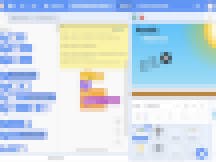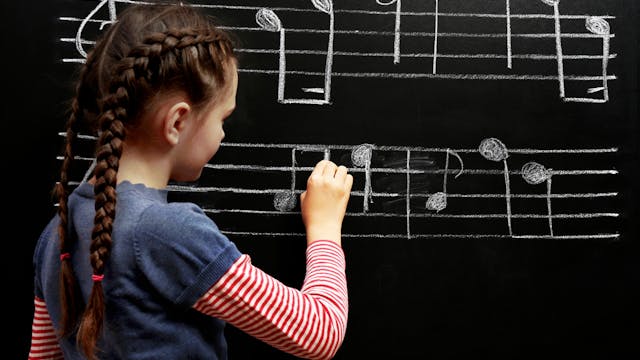Jade’s face peered out at me through the Zoom window, one of 25 faces in an elementary music class that recently went fully remote during the pandemic. Although Jade was only in the fifth grade, she had decided, like many others her age, that she was not into music. Trying to motivate students to learn music during the pandemic was tough, and for a young, new music teacher like myself who wanted all of his students to be engaged in class, Jade presented a challenge.
At the ripe old age of 12 years old, she was already convinced that she wasn’t musically talented. Although Jade was respectful and polite, she made it clear: the only thing she wanted to play was the games on her phone.
I assume I’m not the only one that has struggled to reach certain students in my class, and as students get older, it becomes a hard endeavor. Once they fall behind, they start to feel like they are not good at music and it is not for them, let alone attempting to learn music composition – that’s worse than writing a novel. But what I noticed early in my teaching career is that when kids are excited about telling a story, they figure out a way. They draw comic books. They write phonetically. They tell stories out loud.
That is not always the case with music. Somehow, with music, the barriers seem to rise up too quickly; kids feel like they have to learn a thousand things before they make a sound. The tragedy is that great musical composition can be stories, too – they are just told in a different way.
Music Technology to the Rescue
Before most people compose music, they must master writing and reading music. Unfortunately, there just wasn’t anything I could do to convince some students, including Jade, to learn the difference between “E-flat” and “F#”.
I wondered how I could lower the barrier to entry for students to create a story with limited musical writing skills, much like a kid reading a comic book for the first time. Over the past few years, a few programs have emerged that make it possible for anyone to create musical scores, even before they’re fluent in reading and writing musical notation. Fortunately, I discovered Hyperscore, a software program created by a nonprofit organization called New Harmony Line and started by Tod Machover, a musician and music and media professor at the Massachusetts Institute of Technology.

Hyperscore takes the concept of music as a story and runs with it. Students use dots and lines to create a musical picture. In the background, the software uses the rules of Western musical harmony to fit a musical scale or key.
While this was an exciting development, we were still in the middle of the pandemic, and just turning the software over to my fifth grade students and telling them to write music wasn’t enough. I needed a hook.
Initially, I thought about Jade and her classmates' love for games, then I remembered another MIT project called “Scratch,” a program that millions of kids have used to design their own computer games. Most of us have found that adding a musical score to a game enhances our playing experience. In fact, the kids who build the most polished games on Scratch often add a pre-recorded track. At that point, I thought to myself, what if my students could compose their own tracks and add them to Scratch games?
Before testing my theory with students, I picked a couple of popular Scratch games, went into the game’s code and ripped out any existing soundtrack. After that, I let my students experiment with the program to see what they could do. I didn’t just ask them to compose music – I also wanted them to think about the game itself. I wanted to see if they could juggle factors that they might not have ever considered before:
What was the “mood” of the game?
What should the theme of the music be?
What was the story they were trying to tell with their composition?
How could their music enhance the experience for the player?
In order to be successful, they had to let their ear be their guide and use the lines they drew in Hyperscore to create a story. Before I knew it, the experiment was underway.
A New Form of Musical Expression
After the students were done with the game, I checked the results, and admittedly, I was shocked: Hyperscore had removed the barriers for students. Their creativity was no longer held back by their command of music notation or ability to perform on an instrument. They could explore musical ideas and make changes to the notes in real time. Students whose musical voices had been silent began to bloom, and having the chance to write music to fit a game thrilled them.

While Jade initially lacked confidence in her musical abilities, she felt like a rock star when it came to playing with Scratch and Hyperscore. Almost immediately, she understood the style and mood of the game and her experience playing games on her phone became a valuable asset. As she worked on a Scratch game called Frenetic, a fast-paced platformer with characters jumping over spikes, the music she designed matched that upbeat tempo with just enough tension to remind you that you are jumping over spikes. For the first time that year, she turned in one of the strongest submissions in the class and got to show off a creative talent for music she didn't realize – or believe – she had.
This experiment was my first step in rethinking what a music classroom could look like and how it could be relevant to my students. Jade and the rest of my students helped me realize just how much students are able to do if the artificial barriers blocking their creativity are removed and their interests are considered. My students have a lot to say, musically speaking, and I am thankful I could create opportunities for them to say it in a unique, relevant and accessible format. The field of education can learn a lot from the students we teach, but only if we are willing to meet them where they are and take their interests seriously.


